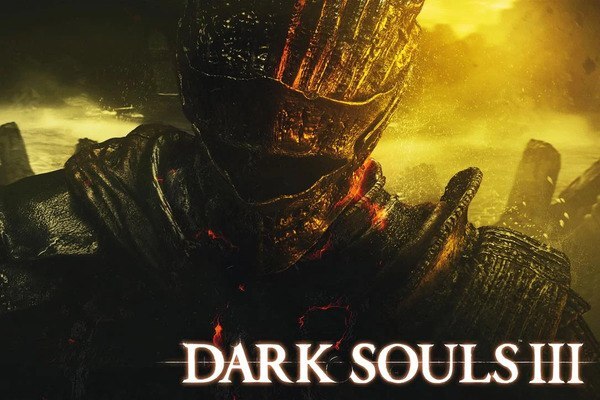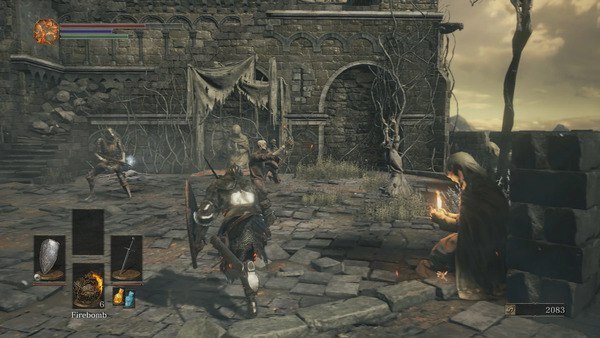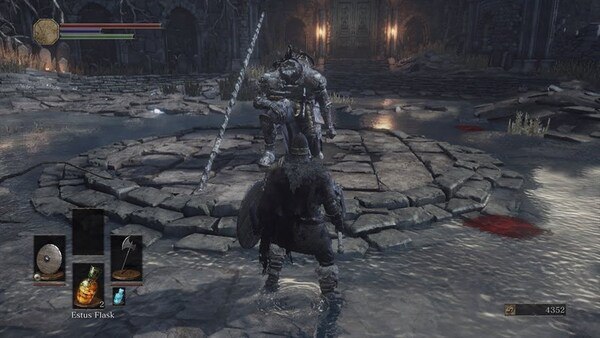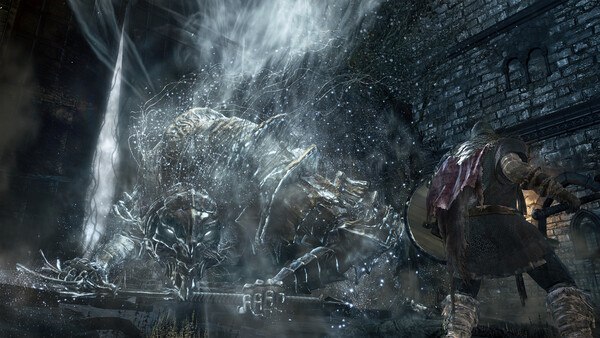Advertisement
Popular Now
Dark Souls III immerses players in a world where sacrifice is a recurring theme, intricately woven into the fabric of its lore, characters, and gameplay mechanics. The concept of sacrifice manifests in various forms, from the personal to the collective, revealing how it shapes the destinies of individuals and the world of Lothric. This article will explore the multifaceted nature of sacrifice in Dark Souls III, examining its implications on character development, narrative structure, and player choices.
 Sacrifice is introduced as a fundamental element in Dark Souls III through the lore surrounding the First Flame. This eternal fire serves as both a beacon of hope and a source of suffering, establishing a backdrop against which the theme of sacrifice unfolds.
Sacrifice is introduced as a fundamental element in Dark Souls III through the lore surrounding the First Flame. This eternal fire serves as both a beacon of hope and a source of suffering, establishing a backdrop against which the theme of sacrifice unfolds.
 The characters known as the Lords of Cinder exemplify the personal sacrifices made in pursuit of greater goals. Their individual stories illuminate the emotional and physical toll that ambition and duty can exact.
The characters known as the Lords of Cinder exemplify the personal sacrifices made in pursuit of greater goals. Their individual stories illuminate the emotional and physical toll that ambition and duty can exact.
 As the Ashen One, the player is thrust into a world that demands sacrifices at every turn. This personal journey underscores the theme of sacrifice as players confront choices that will ultimately determine the fate of Lothric.
As the Ashen One, the player is thrust into a world that demands sacrifices at every turn. This personal journey underscores the theme of sacrifice as players confront choices that will ultimately determine the fate of Lothric.
 One of the most profound choices players face is whether to embrace the darkness or to rekindle the flame. This decision symbolizes a fundamental sacrifice of one’s ideals in favor of survival or the allure of power.
One of the most profound choices players face is whether to embrace the darkness or to rekindle the flame. This decision symbolizes a fundamental sacrifice of one’s ideals in favor of survival or the allure of power.
 Anri’s quest for vengeance highlights the personal sacrifices made in the name of love and loss. Their journey is marked by the pain of losing a loved one, driving them into the depths of despair.
Anri’s quest for vengeance highlights the personal sacrifices made in the name of love and loss. Their journey is marked by the pain of losing a loved one, driving them into the depths of despair.
The Foundation of Sacrifice: Lothric’s Dying Flame
 Sacrifice is introduced as a fundamental element in Dark Souls III through the lore surrounding the First Flame. This eternal fire serves as both a beacon of hope and a source of suffering, establishing a backdrop against which the theme of sacrifice unfolds.
Sacrifice is introduced as a fundamental element in Dark Souls III through the lore surrounding the First Flame. This eternal fire serves as both a beacon of hope and a source of suffering, establishing a backdrop against which the theme of sacrifice unfolds.
The First Flame: A Double-Edged Sword
The First Flame ignited the Age of Fire, but as it begins to fade, the world of Lothric plunges into chaos. The flames are not merely a source of power; they symbolize the sacrifices made by those who came before. The gods and mortals alike have dedicated themselves to maintaining the flame, often at great personal cost.The Cycle of Sacrifice
The cyclical nature of sacrifice is embodied in the notion that to preserve the flame, sacrifices must be made. This cycle is depicted through the Lords of Cinder, who must return to their thrones and rekindle the flame, often leading to their own demise. The lore suggests that each act of sacrifice is a desperate attempt to stave off the darkness that looms over Lothric, emphasizing that hope often comes at a grave price.The Lords of Cinder: Personal Sacrifices
 The characters known as the Lords of Cinder exemplify the personal sacrifices made in pursuit of greater goals. Their individual stories illuminate the emotional and physical toll that ambition and duty can exact.
The characters known as the Lords of Cinder exemplify the personal sacrifices made in pursuit of greater goals. Their individual stories illuminate the emotional and physical toll that ambition and duty can exact.
Gwyn’s Legacy: A Father’s Sacrifice
Gwyn, the Lord of Sunlight, sacrificed himself to link the fire, setting a precedent for future generations. His decision was not merely an act of heroism but a profound sacrifice that illustrates the burden of leadership and the weight of legacy.The Cost of Duty
Gwyn’s sacrifice speaks to the themes of responsibility and the expectations placed upon leaders. His choice led to an endless cycle of suffering, as subsequent generations are compelled to make similar sacrifices in the name of preserving the flame. This burden serves as a grim reminder of the cost of ambition and the sacrifices required to maintain a legacy.The Abyss Watchers: A Fractured Brotherhood
The Abyss Watchers are another poignant example of sacrifice within Dark Souls III. Originally united in purpose, their fight against the Abyss ultimately led to their fragmentation and demise.The Price of Unity
The Abyss Watchers’ commitment to their cause reflects a collective sacrifice, but this devotion also resulted in their madness. As they fought against the Abyss, they became entrapped in a cycle of self-destruction, illustrating how noble intentions can devolve into tragedy. Their story serves as a cautionary tale about the dangers of losing oneself in the pursuit of duty.The Player’s Journey: Sacrifices Made
 As the Ashen One, the player is thrust into a world that demands sacrifices at every turn. This personal journey underscores the theme of sacrifice as players confront choices that will ultimately determine the fate of Lothric.
As the Ashen One, the player is thrust into a world that demands sacrifices at every turn. This personal journey underscores the theme of sacrifice as players confront choices that will ultimately determine the fate of Lothric.
The Burden of Choice
Throughout the game, players face critical decisions that highlight the weight of sacrifice. Each choice reflects a moral dilemma, forcing players to consider what they are willing to sacrifice in their quest for power and redemption.The Impact of Decisions
For instance, the decision to ally with certain NPCs or pursue particular storylines often involves sacrificing potential allies or resources. This dynamic fosters a sense of agency, as players must grapple with the consequences of their choices. The sacrifices made during the journey serve to deepen the player’s emotional investment in the narrative, illustrating how personal decisions can resonate beyond the immediate context.Embracing the Darkness
 One of the most profound choices players face is whether to embrace the darkness or to rekindle the flame. This decision symbolizes a fundamental sacrifice of one’s ideals in favor of survival or the allure of power.
One of the most profound choices players face is whether to embrace the darkness or to rekindle the flame. This decision symbolizes a fundamental sacrifice of one’s ideals in favor of survival or the allure of power.
The Complexity of Choices
Embracing the darkness often means sacrificing the hope of rekindling the flame, leading to an Age of Dark. This choice reflects a philosophical stance on sacrifice, as players must weigh the implications of their actions. The game encourages reflection on what it means to sacrifice hope for the sake of power, showcasing the complexity of human desires and motivations.NPCs and Their Sacrificial Arcs
Non-playable characters (NPCs) in Dark Souls III further illustrate the theme of sacrifice, each with their unique stories and struggles that highlight the personal costs associated with their ambitions.Irina of Carim: The Fragility of Hope
Irina’s story serves as a poignant exploration of the sacrifices made in pursuit of redemption. Initially seeking to overcome her past, her journey becomes a testament to the fragility of hope.The Temptation of Darkness
As players interact with Irina, they witness her gradual descent into darkness. Her choices become increasingly tied to sacrifice, as she faces the temptation of power that ultimately leads to her downfall. Irina’s arc emphasizes the delicate balance between ambition and the sacrifices that come with it, revealing how easily hope can be extinguished.Anri of Astora: A Quest for Vengeance
 Anri’s quest for vengeance highlights the personal sacrifices made in the name of love and loss. Their journey is marked by the pain of losing a loved one, driving them into the depths of despair.
Anri’s quest for vengeance highlights the personal sacrifices made in the name of love and loss. Their journey is marked by the pain of losing a loved one, driving them into the depths of despair.


















